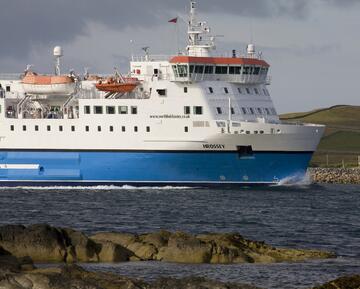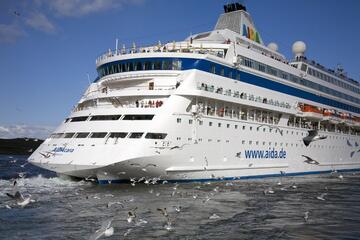Getting to Shetland
Where is Shetland?
The Shetland Islands are the most northerly part of Scotland. Shetland consists of approximately 100 islands, but only 15 of them are inhabited.
Visiting Shetland let you get away from the hustle and bustle of city life, to enjoy the wildlife and stunning scenery. Shetland?s landscape is made up from the Caledonian mountains which once stood as high as the Himalayas. These were eroded by glaciers and weather over millennia, shaping the complex geology we see in Shetland today. In fact, Shetland's geology is so special that the whole of Shetland has been awarded Global Geopark status.
People have lived in Shetland for over 6,000 years, from Neolithic times through to the present day. Shetland's history is fascinating. It is preserved in its ancient buildings and modern museums packed with heritage and culture. The excellent Shetland Museum and Archives is only a short walk away from both of the self-catering accommodation owned by I & F Properties.
Today, Shetland continues to have a rich tradition of seafaring and crofting. Shetland still has a good fishing industry and sheep outnumber people 10 to 1. The oil industry has brought wealth to the islands, whilst having very little impact on Shetland's landscape. The Shetland community's oil fund has provided the community with worthwhile facilities, such as Shetland's excellent leisure centres.
Shetland has good transport links with regular flights to Aberdeen, Edinburgh and Glasgow, and a daily overnight ferry to and from Aberdeen.
Getting to Shetland
There are several ways to travel to Shetland: by overnight ferry, by a flight from various airports, you can sail by yacht or arrive by cruise ship.
The ferry takes you from Aberdeen on the Scottish mainland up to Shetland. Some sailings stop at Kirkwall in Orkney. This will depend on the day of your travel. The sailings are overnight. They leave in the late afternoon or early evening and arrive in Shetland the next morning. You can visit the NorthLink website for timetables and booking information.
Flying is the fastest option. Loganair operates regular flights from Aberdeen, Glasgow, Edinburgh and Inverness, as well as connecting flights from cities nationwide. Flying up to Shetland takes around 55 minutes from Aberdeen, 85 minutes from Edinburgh and 90 minutes from Glasgow. Weather delays may have an effect on journey times.
With Shetland's unpredictable weather the ferry remains the most reliable form of travelling. Another advantage when taking the ferry is that you can take your own car, which makes it much easier to visit the more rural parts of Shetland. Shetland, of course, has several hire car companies, including Bolts Car Hire, Star-rent-a-car, Grantfield Garage.
Shetland is also a very popular stopping-off point for cruise ships operating in the North Sea.
Yachting is also a popular way for people to visit Shetland. There are many piers and marinas with excellent marine facilities around Shetland's 900 miles of coastline. You can visit the Shetland Marinas website for more information.
Around 460 yachts visit Shetland each year and spend time exploring around the Shetland coastline. There are also numerous events which bring yachtsmen up to Shetland, such as local regattas, and the Bergen - Shetland Race.
If you plan to visit Shetland, our two properties in Lerwick would provide you with an ideal base. The properties are located at 42 Commercial Road, and 64b Burgh Road. To enquire about staying with us, please contact us to enquire about availablility and booking.
© Copyright 2010 - 2024. All Rights Reserved. I&F Properties. Website by JLP Internet


